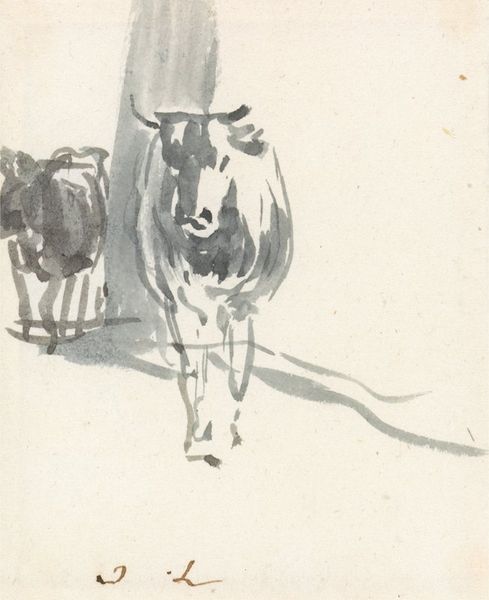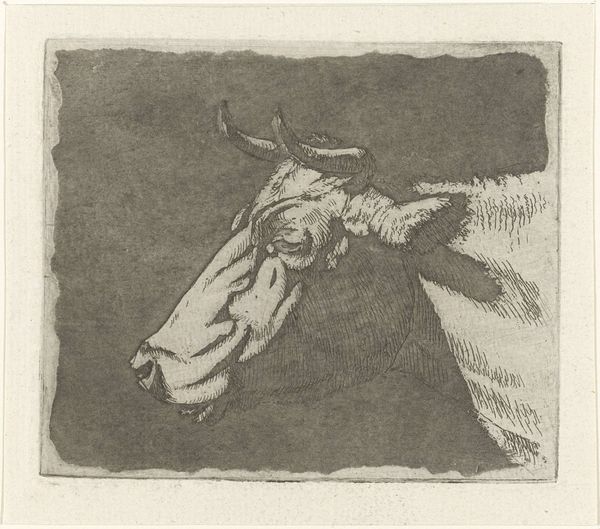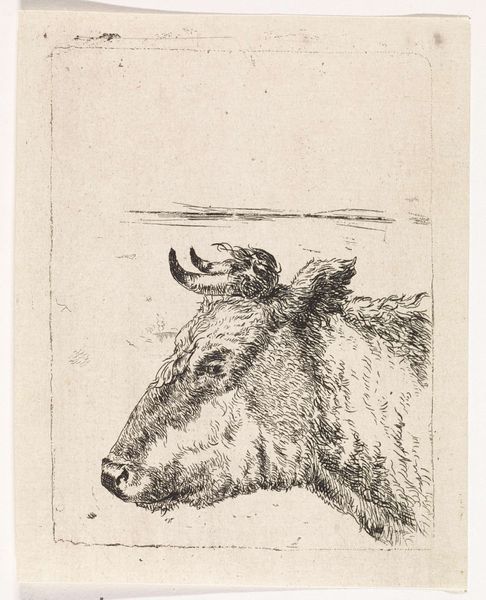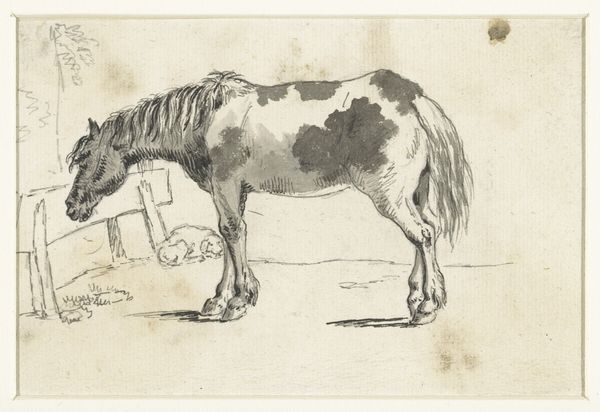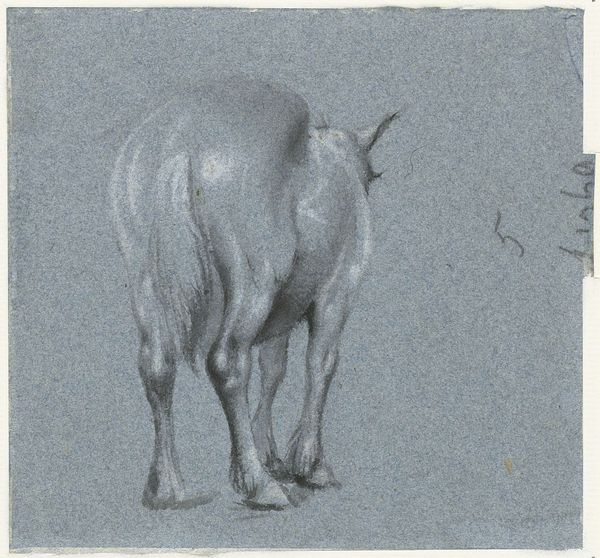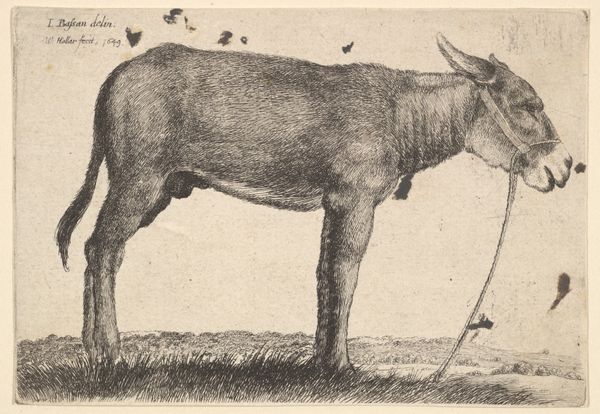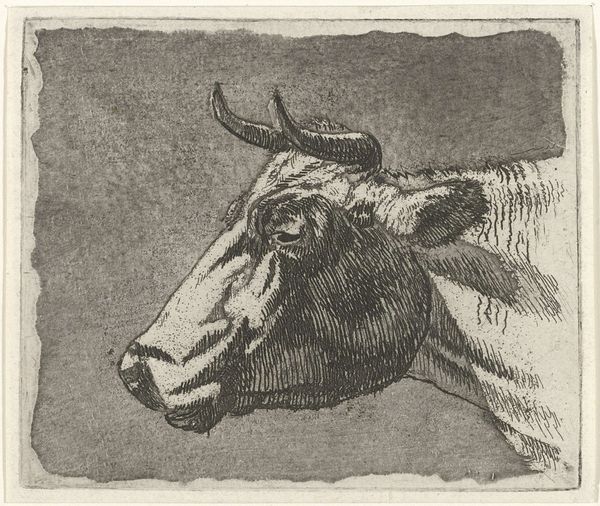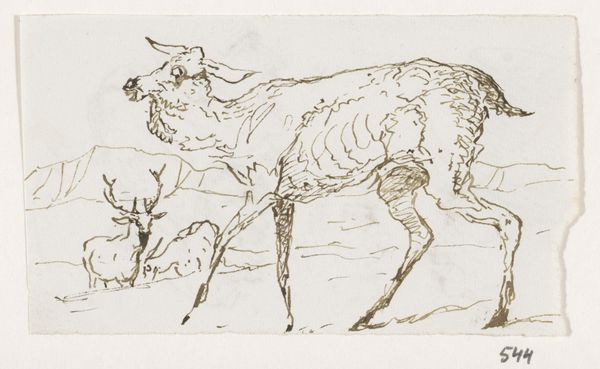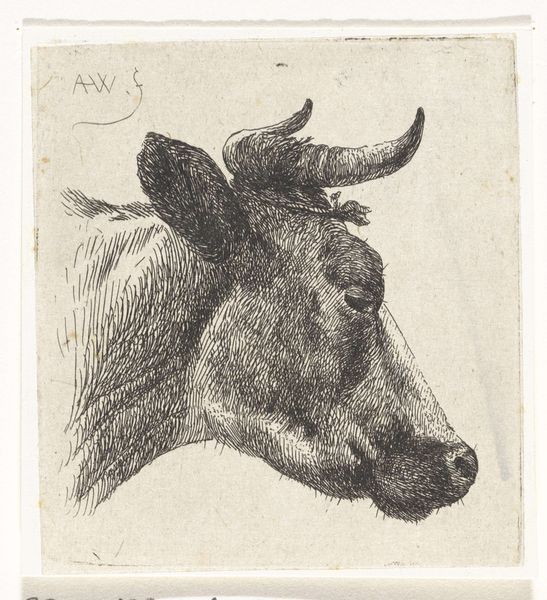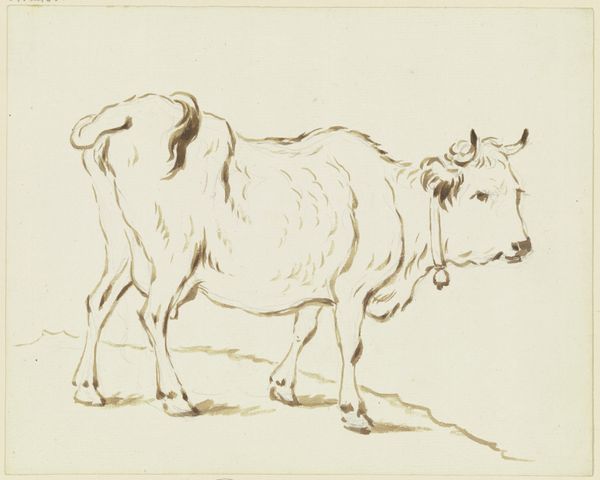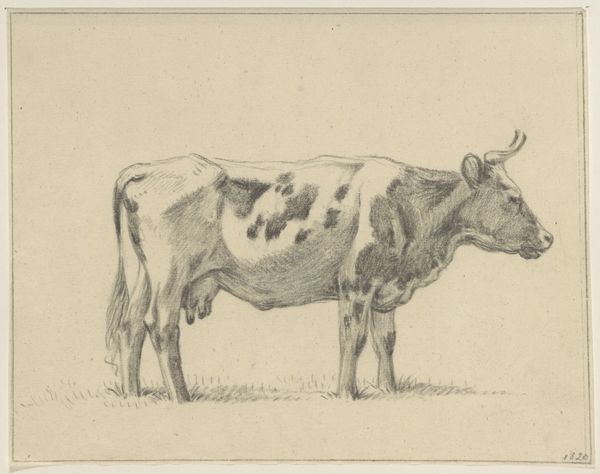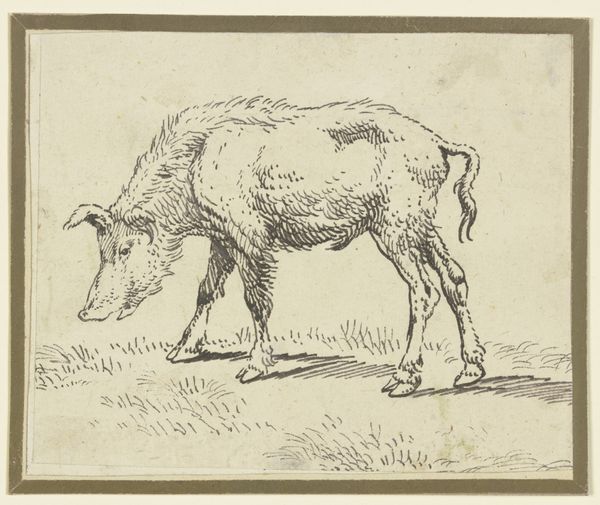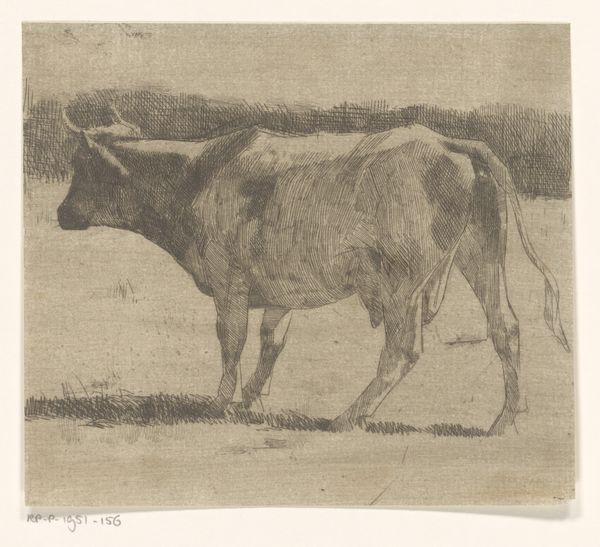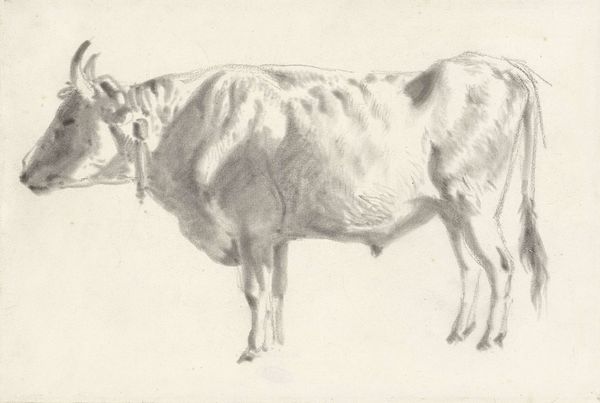
drawing, watercolor
#
pencil drawn
#
drawing
#
pencil sketch
#
landscape
#
watercolor
#
romanticism
#
watercolour illustration
#
realism
Dimensions: height 39 mm, width 38 mm
Copyright: Rijks Museum: Open Domain
Curator: Here we have "Studie van een grazende koe" – that’s "Study of a Grazing Cow" – a drawing by Wouter Johannes van Troostwijk, likely created between 1792 and 1810. It's a work combining pencil and watercolor, currently held here at the Rijksmuseum. Editor: It's surprisingly subdued. The grey washes create a serene, almost melancholy mood. And look at the lines; they’re economical, confident, but create volume from shadows cast by a single light source. Curator: Absolutely. I find it interesting how Troostwijk is engaging with the prevailing agricultural practices and how land was being used in the late 18th and early 19th centuries. We can view this as a reflection on the evolving relationship between humans and the natural world, as animal husbandry became more systematized and commercial. The paper and pigments would have been produced through specific labor relations, connecting even this humble drawing to broader economic shifts. Editor: You’re right, context enriches it. But, strictly looking at form, see the geometry present in the shape of the cow? The slightly angular modelling of the animal—it almost hints at something more abstract. And it is a working sketch but feels complete because it renders a momentary atmospheric affect. Curator: It is a piece of art, but it is a record of someone doing some agricultural activity which becomes its context and its significance. Think of the cow not just as subject but as a product shaped by specific methods. How were these animals bred, fed? And who had access to these animals and their labor? The artwork gives rise to socio-historical exploration. Editor: Agreed, the socio-economic and production of materials is intriguing. Still, I can’t ignore the formal elegance he captured here. The stark contrast of dark and light shapes really simplifies this animal into nearly architectural forms and captures the way the light hit the animal just at that instant. Curator: Perhaps its success resides in its interplay; these materials and techniques capture the specificities of life and labour that Troostwijk himself encountered. Editor: A beautiful summation. Troostwijk transforms the mundane, in his time, through form and process, into something worthy of close observation across the centuries.
Comments
No comments
Be the first to comment and join the conversation on the ultimate creative platform.
